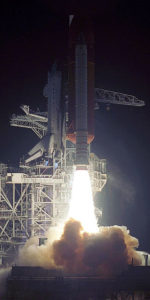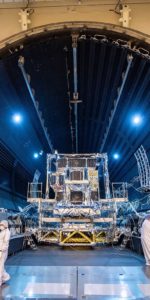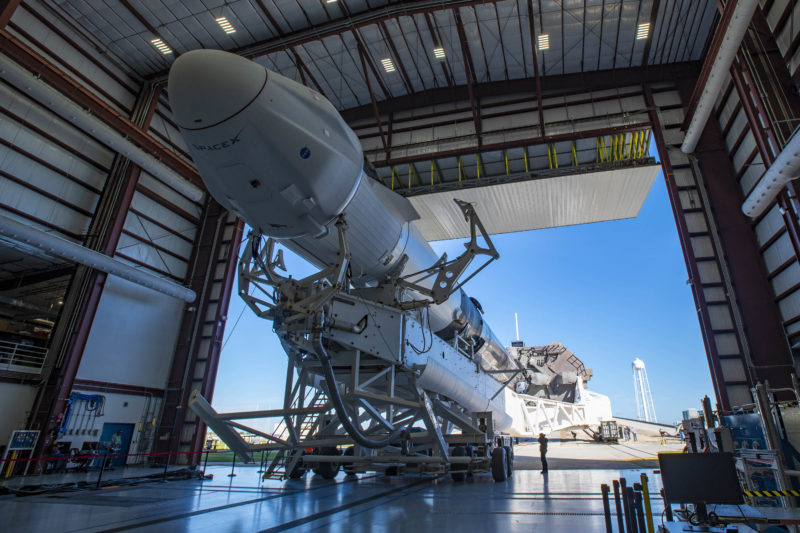
UPDATE DEC 5: SpaceX has pushed the launch to Sunday, Dec 6 at 11:17am EST due to unfavorable weather conditions. Below is our original report before the delay:
Unsuitable weather in the form of scattered showers and low cloud remains the overriding concern as SpaceX readies its CRS-21 Dragon cargo mission—the first flight under the second-phase Commercial Resupply Services (CRS2) contract with NASA—for launch to the International Space Station (ISS) this weekend. Liftoff of a previously-flown Falcon 9 core carrying the Dragon is targeted to occur from historic Pad 39A at the Kennedy Space Center (KSC) in Florida, at 11:39 a.m. EST Saturday, with a backup opportunity on Sunday. SpaceX completed a Static Fire Test of the Falcon 9’s nine Merlin 1D+ first-stage engines this morning.
The current outlook paints a 40-percent picture of acceptable weather conditions on Saturday, improving to 80-percent-favorable on Sunday, with a risk of isolated showers, thunderstorms and heavy cloud cover. “A weakening cold front is expected to push through Central Florida near or during the launch window, with most of the associated rainfall impacting the Spaceport prior to the launch,” noted the 45th Weather Squadron at Patrick Air Force Base in its Thursday morning update. “At a minimum,
widespread clouds and isolated showers can be expected.”
Assuming an on-time launch Saturday, the Dragon is anticipated to complete an autonomous docking (the first CRS provider ever to do so) at International Docking Adapter (IDA)-3 on the station’s Harmony node on Sunday morning.
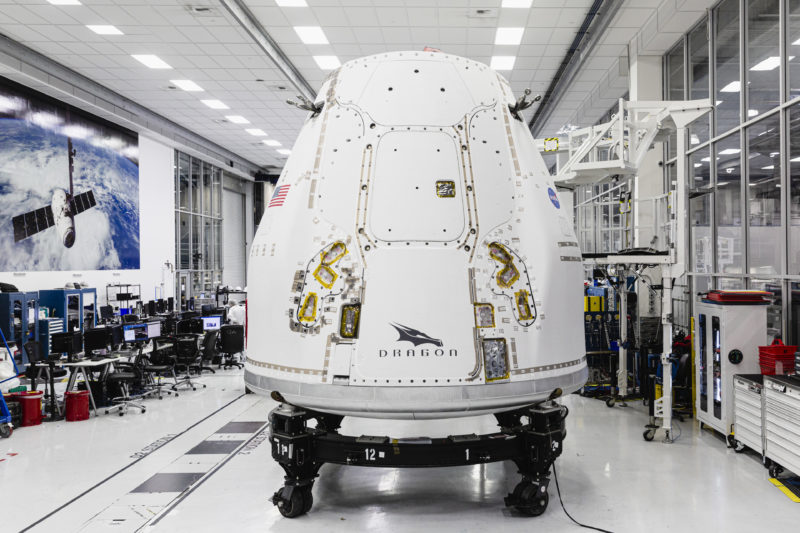
CRS-21 marks the inaugural outing of the cargo-carrying variant of the Crew Dragon, which launched Demo-2 astronauts Doug Hurley and Bob Behnken on Dragon Endeavour back in May and more recently sent Crew-1’s Mike Hopkins, Victor Glover, Shannon Walker and Soichi Noguchi to the ISS aboard Dragon Resilience last month. For the first time, a Cargo Dragon will autonomously dock, rather than being robotically captured and “berthed” at a Common Berthing Mechanism (CBM) interface by Canadarm2, at the station.
And also for the first time, CRS-21 will arrive whilst another Dragon is in residence, as the Crew-1 vehicle enters its fourth week on-orbit. According to SpaceX President Gwynne Shotwell, speaking recently, this is expected to mark the dawn of at least a 15-month period in which one Dragon will always be aboard the ISS. The manifest remains relatively fluid at present, but NASA and SpaceX have detailed their intent to stage “direct-handover” operations with overlapping Crew Dragons slated to fly in April and September 2021, together with three Cargo Dragons in May, August and November. Added to that list is the possibility that Axiom’s first flight may also take place before the end of next year.
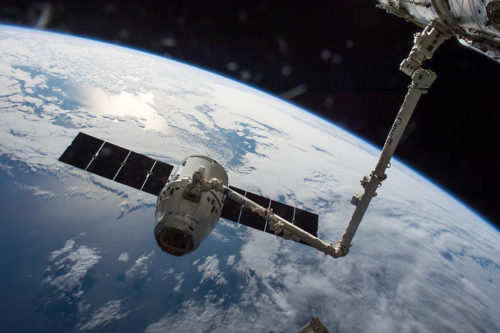
Saturday’s launch will come on the back of more than a decade of Dragon operational experience, which began in December 2008 when SpaceX was awarded its initial CRS1 contract by NASA. Under the terms of that $1.6 billion deal, the Hawthorne, Calif.-headquartered launch services provider was required to fly 12 Dragons and up to 44,000 pounds (20,000 kg) of supplies to successive ISS crews. Three additional missions were secured in early 2015, followed by five more in spring 2016, which resulted in the CRS1 first-phase contract closing out in March 2020 with the launch of CRS-20.
Across the span of those 20 missions, a cumulative total of 95,000 pounds (43,000 kg) of cargo was taken to the station and around 75,000 pounds (34,000 kg) was brought home. Unlike the other ISS uncrewed visiting vehicles—Russia’s Progress, Japan’s H-II Transfer Vehicle (HTV), Europe’s now-retired Automated Transfer Vehicle (ATV) and Northrop Grumman Corp.’s Cygnus—Dragon alone has the capability to return payloads safely back through Earth’s atmosphere and directly into the hands of researchers.
And whilst each uprated Cargo Dragon for CRS2 is reportedly capable of flying up to five flights to the ISS, its first-generation predecessor more than held its own in terms of reusability. From June 2017, nine individual Dragons flew more than once and, indeed, the final three CRS1 ships launched in July and December 2019 and March of this year logged their third trips to the ISS. In fact, the capsule which flew CRS-20 had pulled off its most recent station duty only 15 months prior, making it the current first-place record-holder for the shortest turnaround between two missions by a Cargo Dragon.
In January 2016, SpaceX was one of three finalists (alongside Northrop Grumman and Sierra Nevada Corp.) to win funding for the second-round CRS2 contract to continue restocking the ISS in the 2019-2024 timeframe. Under the terms of this award, SpaceX is required to deliver at least six more cargo-filled Dragons to the station, of which CRS-21 will be the first.
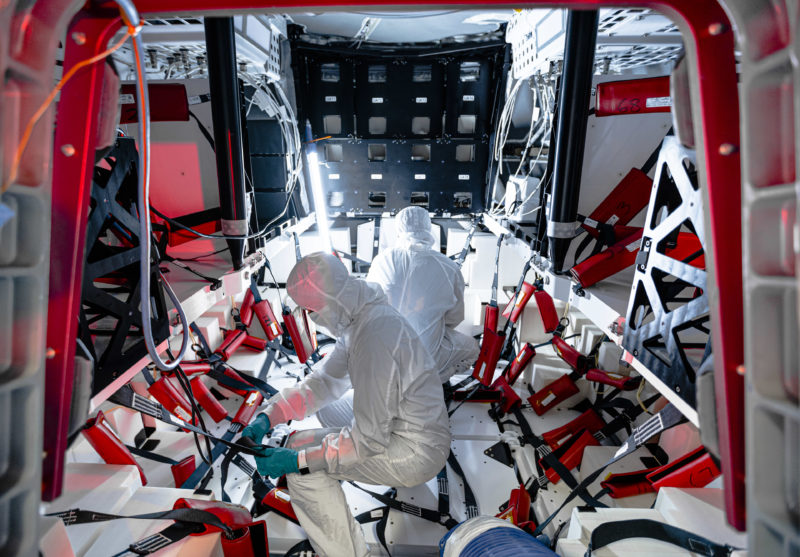
Assuming an on-time launch, it is expected that the vehicle will dock autonomously at International Docking Adapter (IDA)-3 on the space-facing (or “zenith”) port of the Harmony node, for a month-long stay. Whereas the CRS1 Dragons were “berthed”—captured by means of the station’s 57.7-foot-long (17.6-meter) Canadarm2, then affixed to a Common Berthing Mechanism (CBM) on either the Harmony or Unity nodes—the CRS2 Dragons will achieve fully autonomous dockings.
For its part, Northrop Grumman has already kicked off its own CRS2 commitment, with three Cygnus launches between November 2019 and the currently in-progress NG-14 mission, whilst Sierra Nevada targets the maiden voyage of its Dream Chaser Cargo System late next year or possibly early in 2022 atop a United Launch Alliance (ULA) Vulcan-Centaur heavylifter.
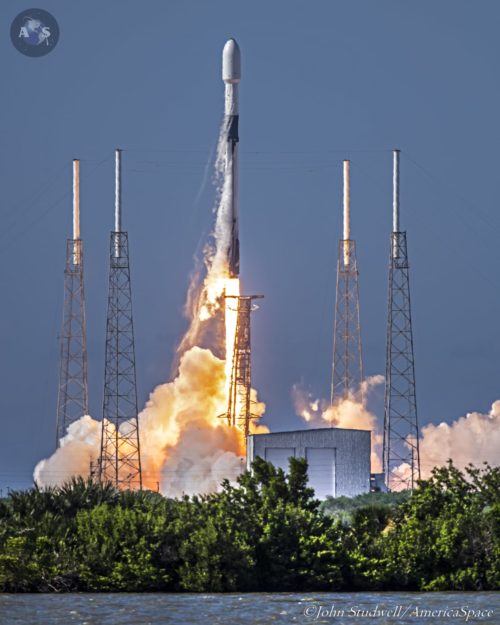
CRS-21 will roar aloft atop SpaceX’s veteran B1058 core, making its fourth mission after previously launching Demo-2 in May, South Korea’s ANASIS-II military communications satellite in July and a recent batch of Starlink low-orbiting internet communications satellites in October.
In doing so, B1058 established a new record for the shortest launch-to-launch turnaround of a reusable orbital-class booster from the Space Coast—breaking the 35-year record of shuttle Atlantis’ STS-61B mission—and surpassed fellow Falcon 9 core B1046, by logging three flights out of the barn in only 129 days.
With Saturday’s liftoff, B1058 will set another record for the shortest time it has taken a booster to fly four times, with only 189 days set to elapse between Demo-2 and CRS-21. That will neatly eclipse the 291 days that current record-holder B1051 set on four flights between January and October 2020. The core is expected to perform an oceanic touchdown on the deck of the Autonomous Spaceport Drone Ship (ASDS), “Of Course I Still Love You”, situated about 390 miles (620 km) off Cape Canaveral.
Meanwhile, the Cargo Dragon for CRS-21 departed SpaceX’s facility in Hawthorne in early October, bound for the Space Coast. Standing 26.7 feet (8.1 meters) tall and 13 feet (4 meters) wide at the base, the spacecraft’s pressurized capsule has a capacity of 328 cubic feet (9.3 cubic meters) and its unpressurised “trunk”—laden with NanoRacks’ Bishop commercial airlock—totals 1,300 cubic feet (37 cubic meters).
All told, the new cargo ship can lift 12,228 pounds (6,000 kg) to the ISS and bring 6,114 pounds (3,000 kg) back to Earth. For CRS-21, it will carry 6,553 pounds (2,972 kg) of cargo and supplies uphill and is expected to return 5,200 pounds (2,360 kg) when it comes home in late December or early January.
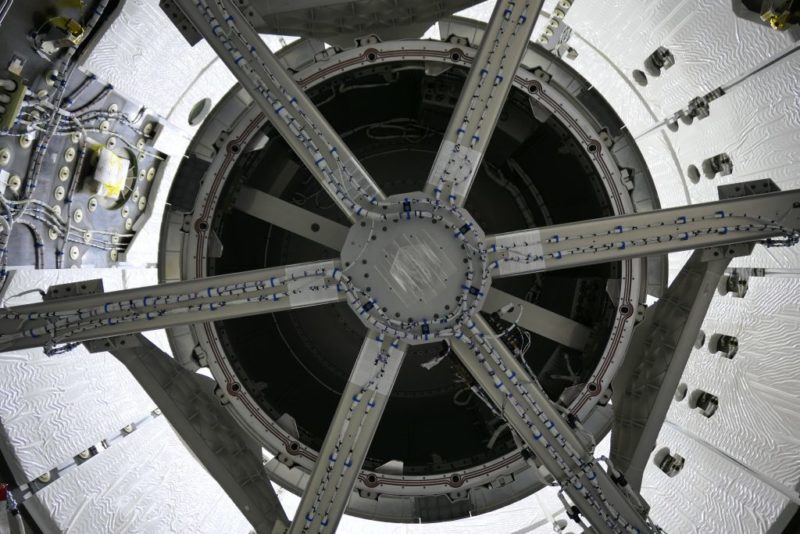
Yesterday (Wednesday), with the cargo ship affixed to its nose, the Falcon 9 was rolled out of the Horizontal Integration Facility (HIF) to Pad 39A, ahead of a customary Static Fire Test of the nine Merlin 1D+ first-stage engines on Thursday morning. “Static Fire Test complete,” tweeted SpaceX. “Targeting December 5 for Falcon 9 launch of Dragon’s 21st resupply mission to the @Space_Station. Team is keeping an eye on weather conditions as the forecast is currently 40-percent favorable for liftoff.”
An on-time liftoff Saturday will see Dragon separate from the final stage of the booster about 12 minutes later, after which it will execute a series of thruster “burns” to achieve an ISS docking at 11:30 a.m. EST Sunday, a few minutes shy of one full day into flight.
This will establish a new launch-to-docking record for any uncrewed visiting vehicle to the U.S. Operational Segment (USOS), which historically have required two days or more to reach their destination in the sky.
Overseeing Sunday’s docking in a manner quite dissimilar to previous missions, Expedition 64 astronauts Kate Rubins and Victor Glover will be stationed inside the multi-windowed cupola. A key difference is that the crew will not be using Canadarm2 robotics to grapple Dragon, but will monitor the spacecraft’s approach via the Rendezvous and Prox Ops Program (RPOP) through the Common Communications for Visiting Vehicles (C2V2) hardware.
“Rubins and Glover will [monitor] the spacecraft’s telemetry through a communications link between Dragon and the station during the approach and docking phase of the mission, which is about the last one hour and 15 minutes before docking,” NASA told AmericaSpace. “Dragon will be in this phase of flight (inside the Approach Ellipsoid) about an hour less than the operations for the previous version of Dragon.” Following docking, hatches may be opened within as little as two hours. “An assessment will be made after successful vestibule pressurization and leak checks,” NASA advised us.
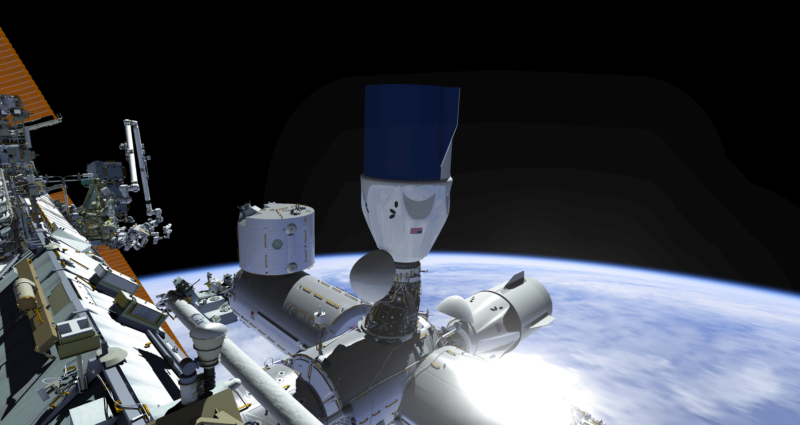
CRS-21 marks the first time that a docking has occurred at IDA-3, which resides on the zenith face of the station’s Harmony node. This particular port was delivered and installed onto the ISS in the summer of 2019 and underwent a thorough robotics survey by ground-based robotics controllers (ROBO) in July 2020 to ensure its readiness to support CRS-21.
Cargo Dragons are expected to exclusively use the IDA-3 port, which offers the Canadarm2 robotics easier access to the trunk for the extraction of Bishop and installation onto the Tranquility node. “The extraction date of the NanoRacks Bishop airlock is still under review, but may be late December,” NASA told us. “It will take about 5.5 hours and will be a ROBO task.”




